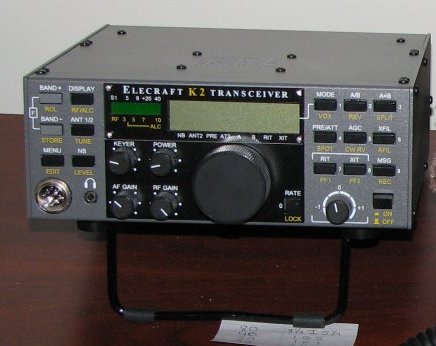Elecraft K2: Difference between revisions
(New page: Elecraft introduced its first amateur radio kit in 1999. It was named the K2, after the [http://en.wikipedia.org/wiki/K2 second-highest mountain peak in the world]. [[Image:Elecraft_...) |
(Added link to Elecraft web site.) |
||
| Line 6: | Line 6: | ||
The basic K2 design puts out 15 watts on [[Modes#Continuous Wave (CW)|CW]], but its capabilities can be extended with optional add-on boards. These offer [[Modes#Single-Sideband (SSB)|SSB]], [[Digital Signal Processing (DSP)|DSP]], internal battery power, an automatic [[antenna tuner]], and other features. | The basic K2 design puts out 15 watts on [[Modes#Continuous Wave (CW)|CW]], but its capabilities can be extended with optional add-on boards. These offer [[Modes#Single-Sideband (SSB)|SSB]], [[Digital Signal Processing (DSP)|DSP]], internal battery power, an automatic [[antenna tuner]], and other features. | ||
Refer to the [http://www.elecraft.com/k2_page.htm Elecraft K2 web site] for more details. | |||
Revision as of 18:15, 17 April 2008
Elecraft introduced its first amateur radio kit in 1999. It was named the K2, after the second-highest mountain peak in the world.
The K2 is widely regarded as one of the highest-performance rigs in amateur radio. Because it is a kit, it offers challenges above and beyond those of off-the-shelf rigs. However, it is not difficult to assemble a K2. Elecraft has written extremely detailed assembly instructions, provides ongoing support by way of email and an email list/reflector, and the design puts nearly all of the parts on one of several PC boards which plug together directly, with few wires used.
The basic K2 design puts out 15 watts on CW, but its capabilities can be extended with optional add-on boards. These offer SSB, DSP, internal battery power, an automatic antenna tuner, and other features.
Refer to the Elecraft K2 web site for more details.
